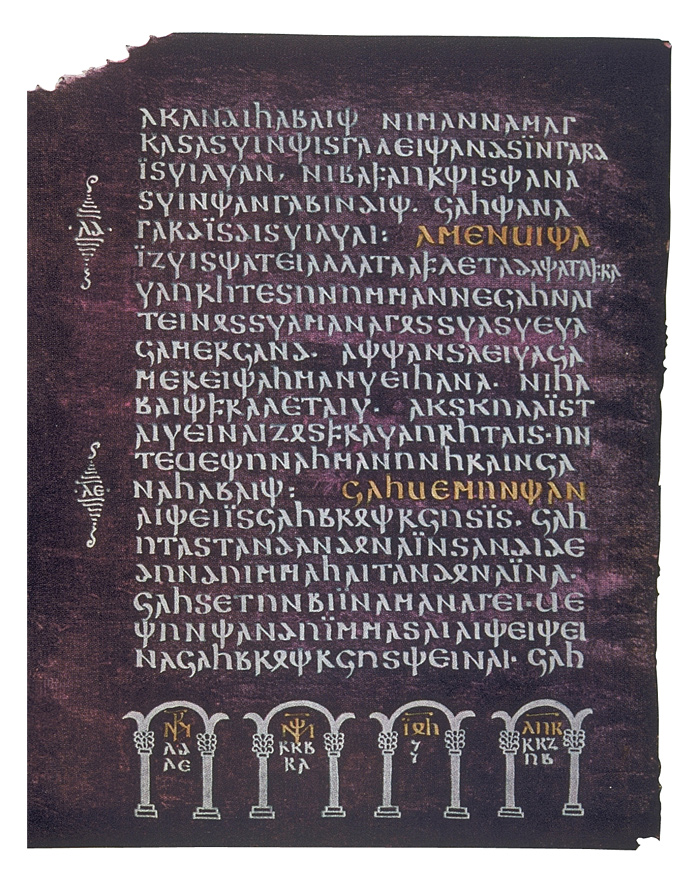During the third century, the Goths lived on the northeast border of the Roman Empire, in what is now Ukraine, Bulgaria and Romania. The first Greek references to the Goths call them Scythians, based on the name for this region along the Black Sea.
During the fourth century, the Goths were converted to Christianity, largely through the efforts of Bishop Wulfila, who invented the Gothic alphabet and translated the Bible into the Gothic language in Nicopolis ad Istrum in today’s northern Bulgaria. Portions of this translation survive, affording the main surviving text written in the Gothic language.
During the fifth century, the Goths overran parts of the Western Roman Empire, including Italy, southern France, and Spain. Gothic Christianity reigned in these areas for two centuries.
Wulfila, literally “Little Wolf”, was of Cappadocian Greek descent. His parents were captured by plundering Goths in 264. Raised as a Goth, he later became proficient in both Greek and Latin. He was ordained a bishop by Eusebius of Nicomedia and returned to work as a missionary, converted many among the Goths to Arian Christianity. When they reached the western Mediterranean, this set them apart from their orthodox neighbours and subjects.
To escape religious persecution, he obtained permission from Constantius II in 348 to migrate with his flock of converts and settle near Nicopolis ad Istrum in modern northern Bulgaria, where he translated the Bible from Greek into the Gothic language and devised the Gothic alphabet. Fragments of his translation have survived, notably the Codex Argenteus held since 1648 in the University Library of Uppsala in Sweden.
